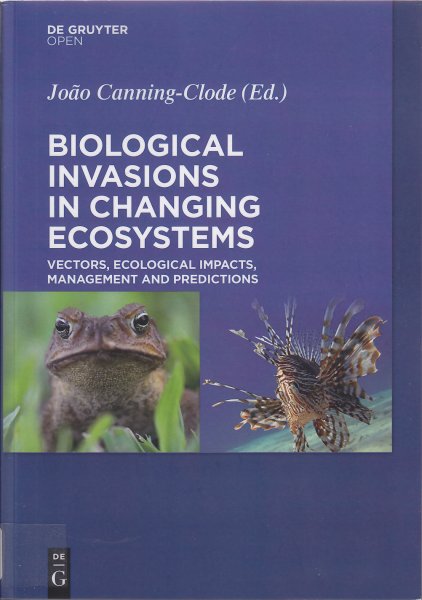
Publisher: De Gruyter Open, Berlin
Publication Year: 2016
Binding: 1
Page Count: 488
ISBN Number: 9783110438659
Price: £119.99
Biological Invasions in Changing Ecosystems: Vectors, Ecological Impacts, Management and Predictions
Invasion ecology has been a growing discipline in recent decades, and with good reason as the consequence of non-native invasive species thriving outside of their native ranges, as a result of human activity, can be extremely detrimental ecologically and economically.
‘Biological Invasions in Changing Ecosystems’ covers the topic logically with sections on the pathways, impacts and management of invasions as well as future directions. Contributions from over 50 scientists provide a neat snapshot of current understanding through expert discussion and case studies which cover a variety of topics, albeit with an emphasis on aquatic systems, including an interesting account of the history of avian invasions. Inevitably, writing style is a little inconsistent between authors but chapters are grouped well, each with a useful bulleted summary which make it an easy book in which to find and read about specific related topics, which is suited to people studying biology, who are the primary intended audience.
Possibly the greatest positive of this book is the open-access publish (of digital copies), which benefits those students who may be based in countries or institutions which may not have endless resources as well as any interested individual who takes a professional or personal interest in biological invasions and wants to understand more.
Sometimes the difficulty with books like this is that there is no real synthesis, tying together all the chapters from different authors. Nonetheless, there are some clear messages that come through when reading, such as the dynamic nature of the field (hence the benefit of periodical books summarising knowledge such as this) as well as invasions resulting as an indirect effect of our actions, as in the example of deer ked responding to managed moose populations in Scandinavia.
The closing remarks of the final chapter I think do set the tone for one of the main messages. There is talk of the need for ‘reconciliation ecology’ whereby solutions are sought integrating biodiversity into human-dominated landscapes and acknowledges that return to pristine conditions is unlikely in many cases. While this may not sit well with more optimistic readers, it is an important point that reducing the detrimental effects of non-native invasive species is often more likely to succeed when approached this way. In short, this book is a nice addition to the invasion ecology literature and although not all of the chapters may be essential reading for everyone, J. Canning-Clode has done a good job to ensure that there is still a wide appeal.
Book reviewed by Gary Clewley





Share this page